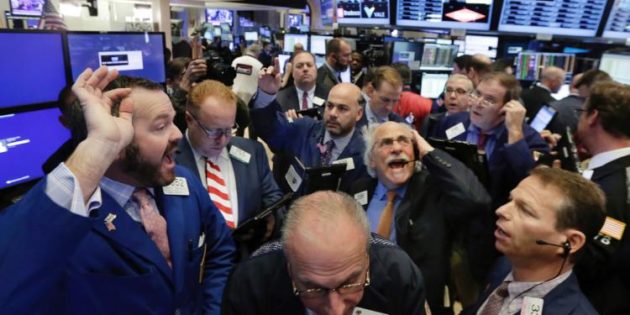Hello everyone,
I have been dealing almost exclusively with ETFs for a year now and have never really taken the time to look at individual stocks. But what is the best way to start to find a suitable stock? Key figures! I took a look at a few key figures and tried to explain what they mean and how to calculate them. I've learned something new myself and of course I'm open to suggestions and ideas for improvement!
𝗠𝗮𝗿𝗸𝘁𝗸𝗮𝗽𝗶𝘁𝗮𝗹𝗶𝘀𝗶𝗲𝗿𝘂𝗻𝗴
This key figure describes the stock market value of a company. It is calculated by multiplying the number of outstanding shares by the current market price. Among other things, it is a criterion for inclusion in a certain market index, such as the German DAX Index or the American S&P 500.
𝘉𝘦𝘪𝘴𝘱𝘪𝘦𝘭:
1,000,000 shares were issued by ThisIsEmil-AG. The current IPO shows that each share currently brings in € 350. You therefore multiply 1,000,000 shares by € 350 and obtain a market capitalization of the company of € 350,000,000. A distinction is usually made between three capitalization figures:
1. large-cap companies: 10 billion US dollars +
2. mid-cap companies between 2 billion and 10 quadrillion US dollars
3. small-cap companies between 300 million and 2 billion US dollars
𝗞𝘂𝗿𝘀-𝗚𝗲𝘄𝗶𝗻𝗻-𝗩𝗲𝗿𝗵ä𝗹𝘁𝗻𝗶𝘀 (𝗞𝗚𝗩)
The price/earnings ratio is a key figure known as the price/earnings ratio (PER or P/E ratio). The ratio indicates the ratio of the profit of a listed company to the current stock market valuation.
Caution is advised with this ratio, as high-growth companies that generate high profit increases have a higher P/E ratio than shares in companies that are growing slowly but steadily. It is therefore necessary to take a closer look depending on the investment strategy.
A share with a P/E ratio of less than 12 is normally good value. If the value is over 20, the share is considered expensive. However, it is helpful to compare the values within a sector.
𝘉𝘦𝘪𝘴𝘱𝘪𝘦𝘭:
If the share of ThisIsEmil-AG costs €100 and the company generates €6 per share, the calculation for the P/E ratio is:
P/E ratio = share price / earnings per share
P/E ratio = 100 / €6 (earnings per share)
P/E RATIO = 16.67
𝗞𝘂𝗿𝘀-𝗨𝗺𝘀𝗮𝘁𝘇-𝗩𝗲𝗿𝗵ä𝗹𝘁𝗻𝗶𝘀 (𝗞𝗨𝗩)
Another key figure is the P/E ratio, which is a ratio of a company's current market capitalization to its annual turnover. Valuing a company using the KUV is helpful if the company is young or has a cyclically fluctuating return on sales. The P/E ratio is also helpful for companies that are in the start-up loss phase. Normally, the P/E ratio described above is more meaningful, as the P/E ratio does not provide any information on the company's profitability.
It is also recommended to evaluate the company using other key figures in addition to the price/sales ratio.
𝘉𝘦𝘪𝘴𝘱𝘪𝘦𝘭:
ThisWouldBeEmil-AG consists of a total of 200 million shares and generated revenue/turnover of EUR 2 billion in the last financial year. This means that sales per share amounted to 2000/200 = EUR 10. The current share price is EUR 9.
KUV = 9 euro/10 euro = 0.9
This means that the share - with a P/E ratio of less than 1 - is recommendable if the P/E ratio is the only key figure used.
𝗘𝗶𝗴𝗲𝗻𝗸𝗮𝗽𝗶𝘁𝗮𝗹𝗾𝘂𝗼𝘁𝗲 (𝗘𝗚𝗤)
The equity ratio is an indicator of how solidly financed a company is. A brief and simplified digression regarding total capital: The origin of a company's assets is divided into equity and debt capital. Equity capital is capital that, for example, the owner of the company has raised himself to finance it. Borrowed capital, on the other hand, describes the capital that companies receive from third parties. This can include banks that provide the company with loans.
A high equity ratio is therefore seen as positive, as the company then finances itself primarily from its own resources and is not reliant on borrowed capital. This means that the company is not at risk of not being able to repay its debts.
𝘉𝘦𝘪𝘴𝘱𝘪𝘦𝘭:
ThisWasEmil-AG has 1,000,000 euros in equity. Its total capital amounts to 2,000,000 euros.
EKQ = (1,000,000 / 2,000,000) x 100 = 50%
This company therefore has an equity ratio of 50%, which is a very good value.
𝗗𝗶𝘃𝗶𝗱𝗲𝗻𝗱𝗲𝗻𝗿𝗲𝗻𝗱𝗶𝘁𝗲
The dividend yield is important for dividend hunters. It indicates the relationship between the share price and the dividend paid out or announced. The ratio is often published by stock corporations for investors. The calculation depending on the dividend - paid or announced - can have advantages and disadvantages. The announced DR is merely a forecast and can of course deviate and should therefore only be seen as a guideline. Of course, the dividend already paid out is also a basis for speculation. It is important to analyze the dividend yield over several years.
𝘉𝘦𝘪𝘴𝘱𝘪𝘦𝘭:
You hold shares in a company at a share price of 100 euros. The dividend is 5 euros.
Dividend yield = (5 euros/100 euros) x 100 = 5 percent.
A company with a very high dividend yield is, among other things $BAS (-0.06%) with a yield of approx. 5 %.
Of course, this was only a selection of key figures. What else do you think is important about the free float? Profit growth? Or the return on equity?
Sources:



















